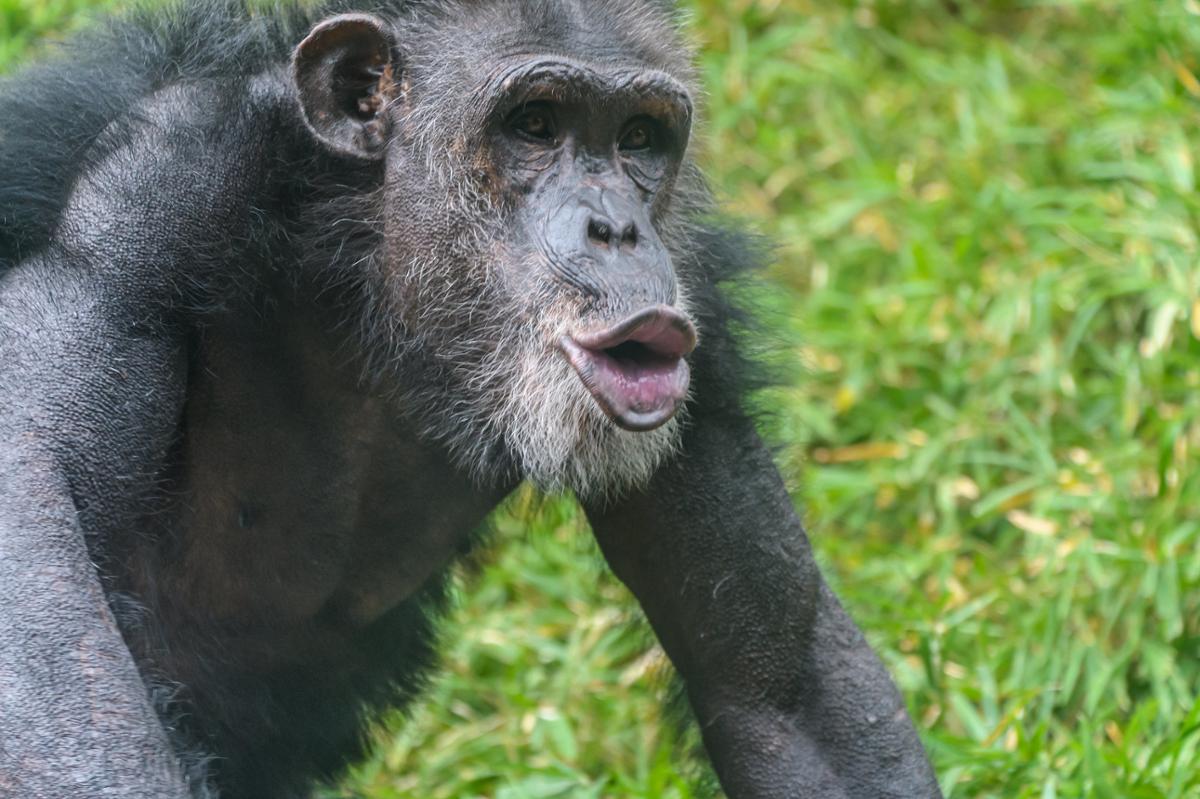Little kids on the playground let their imaginations run wild. They pretend to be roaring lions or howling wolves. And swinging from jungle gym, they might even let out the screeching call of a monkey.
Would you ever mistake playground hoots as the call of a real baboon or great ape? Probably not. No matter how enthusiastic the child’s screeches, their throat lacks the appendages that make a chimp sound like, well, a chimp.
Researchers recently uncovered this difference between humans and primates. Mammals speak by forcing air up through our vocal cords. Our vocal cords are muscles, and when we vibrate them, they create our voice and all the speech, cries, and grunts we’re capable of. Screaming kids at the park, for instance, really work their vocal cords. Other primates, though, have both vocal cords and another set of muscles, called vocal membranes. These membranes destabilize monkey’s voices, creating the characteristic speech of primates: chaotic, grating, varied in timbre and volume.
Our ancestors probably had vocal membranes too, losing them over the course of evolution. But could simpler throats hold the secret to complex communication? Scientists today are exploring if vocal membranes’ disappearance allowed ancient humanoids to control their chaotic voices, resulting in the stability, subtleties, and variations of human language.
It’s an exciting idea, with more research needed. But as any parent knows, while children might not sound exactly like a macaque or lemur, they’re also pretty good at being loud and chaotic. It gives new meaning to that favorite playground equipment, the monkey bars.










